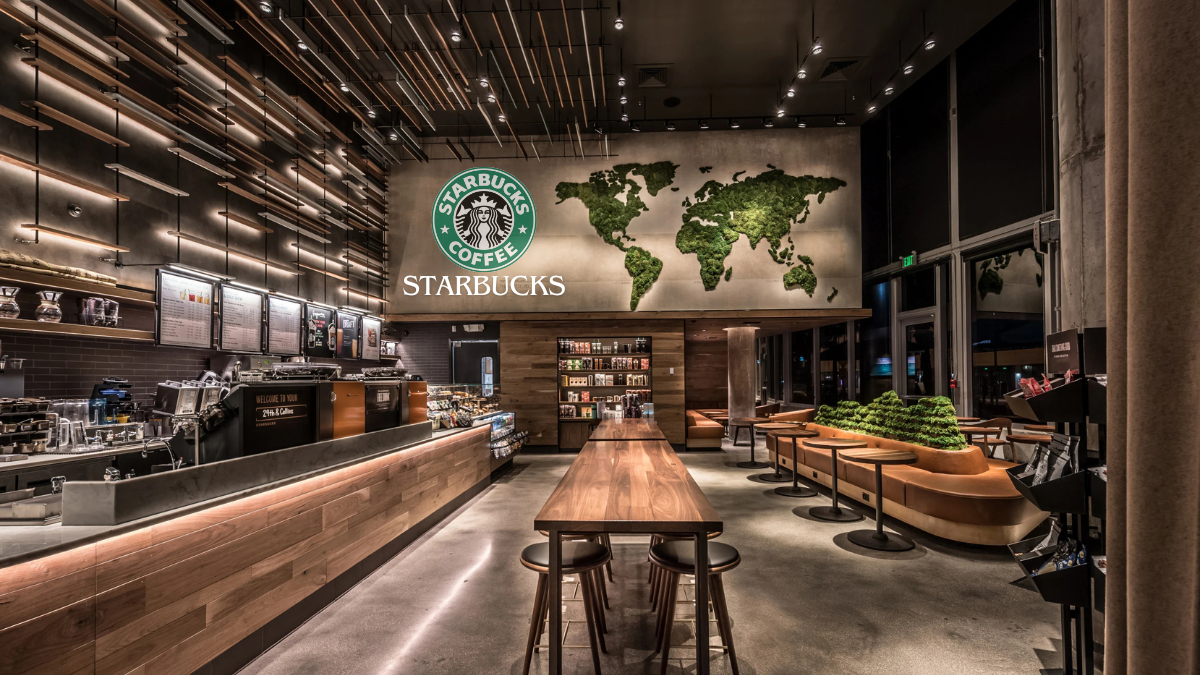Starbucks, an iconic global coffeehouse chain, has become synonymous with premium coffee experiences and a modern café culture. Founded in 1971 in Seattle, Washington, the company has grown into one of the largest coffeehouse chains in the world, boasting over 30,000 locations across more than 80 countries. Through innovation, consistent branding, and a commitment to customer satisfaction, Starbucks has redefined how people consume coffee, turning it from a simple beverage into a lifestyle.
The Origins of Starbucks
Starbucks began as a single store in Seattle’s Pike Place Market, founded by Jerry Baldwin, Zev Siegl, and Gordon Bowker. The trio initially focused on selling high-quality coffee beans and equipment rather than serving beverages. Inspired by Alfred Peet, the founder of Peet’s Coffee, they adopted a strong emphasis on high-grade Arabica coffee and education about its origins.
In 1982, Howard Schultz joined the company as the director of retail operations and marketing. During a trip to Italy, Schultz experienced the vibrant café culture of Milan and was inspired to recreate a similar atmosphere in America. His vision extended beyond selling coffee; he wanted to create a “third place” for people, a welcoming space between home and work. Though the original founders were hesitant about Schultz’s vision, he eventually acquired the company in 1987 and began transforming into a coffeehouse chain.
Starbucks’ Growth and Global Expansion
Under Schultz’s leadership, Starbucks embarked on aggressive expansion. By the 1990s, it had become a household name in the United States, with stores popping up in urban centers, suburban malls, and even airports. This growth was fueled by a strategy that focused on quality, innovation, and a consistent customer experience.
In 1996, Starbucks opened its first international location in Tokyo, Japan, marking the beginning of its global journey. The brand quickly resonated with consumers worldwide, blending local tastes with its core identity. For example, in Japan, introduced matcha-flavored beverages to cater to local preferences. This adaptability became a hallmark of the brand, allowing it to thrive in diverse markets such as China, India, and the Middle East.
The Starbucks Experience
A key factor behind Starbucks’ success is its ability to deliver a unique and consistent experience. The company has mastered the art of creating a welcoming environment where customers can relax, work, or socialize. From the cozy furniture to the ambient music and free Wi-Fi, every aspect of a Starbucks store is carefully designed to enhance the customer experience.
The brand’s baristas play a significant role in this experience. emphasizes employee training and empowerment, ensuring that every cup of coffee is made with precision and care. Moreover, the company’s policy of addressing customers by name fosters a sense of personalization and connection, setting it apart from other chains.
Innovation in Beverages and Food
Starbucks has consistently pushed the boundaries of innovation in its product offerings. Its menu features an extensive range of beverages, from classic espresso-based drinks like lattes and cappuccinos to creative concoctions like the Pumpkin Spice Latte and the Unicorn Frappuccino. These seasonal and limited-edition beverages generate significant buzz and have become cultural phenomena in their own right.
The company has also expanded its food menu to include pastries, sandwiches, salads, and snacks. Collaborations with local artisans and suppliers allow to offer unique food options that complement its beverages. Additionally, the introduction of plant-based milk alternatives and vegan-friendly options demonstrates Starbucks’ commitment to inclusivity and sustainability.
Starbucks and Sustainability
As a global leader, Starbucks recognizes its responsibility to address environmental and social challenges. The company has made substantial investments in sustainability initiatives, from sourcing ethically produced coffee to reducing waste and carbon emissions.
Starbucks collaborates with coffee farmers worldwide through its Coffee and Farmer Equity (C.A.F.E.) Practices program, which ensures fair wages, ethical labor practices, and sustainable farming techniques. By partnering with conservation organizations, supports reforestation efforts and biodiversity preservation in coffee-growing regions.
To combat waste, has introduced reusable cups, incentivized customers to bring their own mugs, and worked toward making its packaging recyclable. The company has also pledged to achieve carbon neutrality and reduce water usage by 50% by 2030. These efforts reflect Starbucks’ commitment to long-term environmental stewardship.
Digital Transformation and Customer Engagement
Starbucks has been at the forefront of leveraging technology to enhance customer engagement. The mobile app, launched in 2011, revolutionized the way customers interact with the brand. It allows users to place orders, earn loyalty points through the Rewards program, and access personalized offers. The app has become one of the most popular in the food and beverage industry, driving sales and fostering customer loyalty.
In addition to the app, Starbucks has embraced digital platforms to connect with its audience. Through social media campaigns, engaging content, and partnerships with influencers, the brand has maintained its relevance in a rapidly changing digital landscape.
Challenges and Criticisms
Despite its success, starbucks has faced its share of challenges and criticisms. Some argue that the company’s aggressive expansion has led to the homogenization of local cultures, as stores often replace smaller, independent cafés. Critics have also highlighted issues related to labor practices, such as insufficient wages and unionization efforts among employees.
In response, Starbucks has taken steps to address these concerns. The company has implemented wage increases, expanded employee benefits, and initiated dialogues with workers to improve workplace conditions. While progress has been made, the company continues to navigate the complexities of balancing profitability with social responsibility.
Starbucks’ Vision for the Future
Looking ahead, Starbucks aims to strengthen its position as a leader in the coffee industry while addressing the evolving needs of its customers. The company plans to invest in drive-thru locations, delivery services, and smaller-format stores to adapt to changing consumer behaviors.
Sustainability remains a top priority, with a focus on developing innovative packaging solutions, reducing greenhouse gas emissions, and supporting regenerative agricultural practices. Furthermore, Starbucks is exploring new markets and expanding its presence in emerging economies, ensuring that its brand continues to resonate with a global audience.
Conclusion
Starbucks is more than just a coffee chain; it is a cultural phenomenon that has reshaped how people experience coffee. From its humble beginnings in Seattle to its status as a global powerhouse, the brand’s journey is a testament to the power of vision, innovation, and adaptability. By prioritizing quality, customer experience, and sustainability, Starbucks has cemented its place as a leader in the coffee industry and a symbol of modern café culture.




